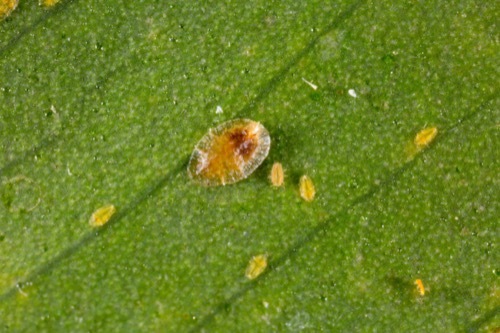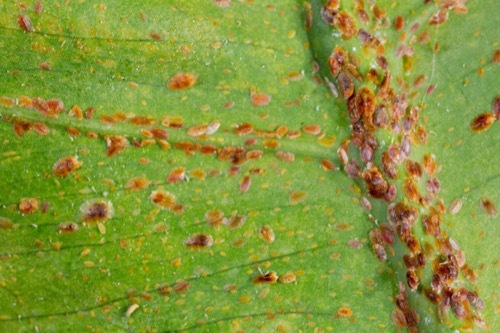Scale Insects in the United States


Scale insects are very small--sometimes only 1/16 of an inch wide, but also up to 3/8 of an inch across. Most armored scales measure 1/32-1/16 of an inch, while soft scales are typically from 1/16-1/4 of an inch long.
Female scale insects--the ones you see sticking to your plants--are generally oval or circular in shape. Some varieties of adult female scale have no means of locomotion and will remain in their selected spot for life. The males of these species are rarely seen and resemble tiny gnats with some mobility.




